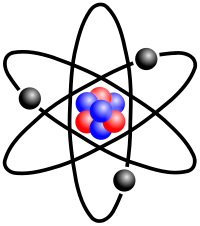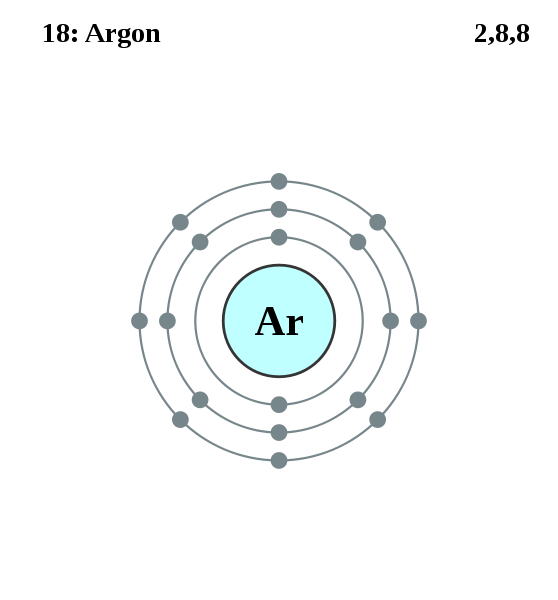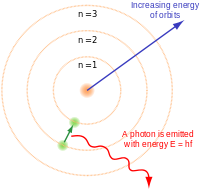What is the formula (2 x 3.3332) x λ ?
Go back to our picture of Archimedes ball inside a cylinder. Th volume of a sphere is such that three balls in a closed cylinder would have enough space left over to put a fourth ball in there.
We are looking for a formula which doesn't include time, so we can include frequency (cycles per unit time) if it is the same as wavelength, but it isn't. Wavelength is a unit of distance, but there is a direct (but possibly inversely proportional) relationship between wavelength and frequency. Go back again to what you know about frequency and its relationship to energy or matter (mass).
Is c = λ f ? (gravitational wave) Is the speed of light really equal to its frequency times its wavelength? shouldn't it also have a mass? and if that mass was an arbitary number (2 x 3.3332) x λ, why shouldn't the mass of an electron be a multiple of this number? Because Energy = Mass times velocity..
Is that like saying medical practice is equal to signs plus symptoms? Signs are something the doctor can see, and symptoms are something the patient can feel and describe. The doctor cannot see the symptoms, and may not believe that the patient is being honest.
What about:
Using the chiral basis the Dirac equation becomes:

Here is the problem again. F=MA, P=MV
Momentum is conserved, meaning energy is not lost, but is transferred somewhere else. The greatest mind today who understands this is Stephen Hawking.
It is like all the possible combinations available on a billiards or snooker table. You put energy in, and the result is certain depending upon the angles.
`Twas brillig, and the slithy toves
Did gyre and gimble in the wabe:
All mimsy were the borogoves,
And the mome raths outgrabe.
"Beware the Jabberwock, my son!
The jaws that bite, the claws that catch!
Beware the Jubjub bird, and shun
The frumious Bandersnatch!"
He took his vorpal sword in hand:
Long time the manxome foe he sought --
So rested he by the Tumtum tree,
And stood awhile in thought.
And, as in uffish thought he stood,
The Jabberwock, with eyes of flame,
Came whiffling through the tulgey wood,
And burbled as it came!
The photon
The modern concept of the photon was developed gradually by Albert Einstein to explain experimental observations that did not fit the classical wave model of light. In particular, the photon model accounted for the frequency dependence of light's energy, and explained the ability of matter and radiation to be in thermal equilibrium. It also accounted for anomalous observations, including the properties of black body radiation, that other physicists, most notably Max Planck, had sought to explain using semiclassical models, in which light is still described by Maxwell's equations, but the material objects that emit and absorb light are quantized. Although these semiclassical models contributed to the development of quantum mechanics, further experiments[2][3] validated Einstein's hypothesis that light itself is quantized; the quanta of light are photons.
In the Standard Model of particle physics, photons are described as a necessary consequence of physical laws having a certain symmetry at every point in spacetime. The intrinsic properties of photons, such as charge, mass and spin, are determined by the properties of this gauge symmetry. The photon concept has led to momentous advances in experimental and theoretical physics, such as lasers, Bose–Einstein condensation, quantum field theory, and the probabilistic interpretation of quantum mechanics.

The photon "spins".
This sphere represents the photon. The width of the sphere (diameter) is the same as the height, its wavelength ( λ ). The direction of travel (of the photon) is the length of the cylinder (down).


He supplied a mathematical proof, along with Brandon Carter, Werner Israel and D. Robinson, of John Wheeler's no-hair theorem – namely, that any black hole is fully described by the three properties of mass, angular momentum, and electric charge.

St. Elmo's fire on a ship at sea
St Elmos's Fire
St. Elmo's fire (also St. Elmo's light[1][2]) is a weather phenomenon in which luminous plasma is created by a coronal discharge from a grounded object in an electric field in the atmosphere (such as those generated by thunderstorms created by a volcanic eruption)
St. Elmo's fire is named after St. Erasmus of Formiae (also called St. Elmo, the Italian name for St. Erasmus), the patron saint of sailors. The phenomenon sometimes appeared on ships at sea during thunderstorms and was regarded by sailors with religious awe for its glowing ball of light, accounting for the name.[3]
St. Elmo's fire is a mixture of gas and plasma, as are flames in general and stars. The electric field around the object in question causes ionization of the air molecules, producing a faint glow easily visible in low-light conditions. Approximately 1000 volts per centimeter induces St. Elmo's fire; however, this number is greatly dependent on the geometry of the object in question. Sharp points tend to require lower voltage levels to produce the same result because electric fields are more concentrated in areas of high curvature, thus discharges are more intense at the ends of pointed objects.
Conditions that can generate St.Elmo's fire are present during thunderstorms, when high voltage is present between clouds and the ground underneath, electrically charged. Air molecules glow due to the effects of such voltage, producing St. Elmo's fire.
The nitrogen and oxygen in the Earth's atmosphere causes St. Elmo's fire to fluoresce with blue or violet light; this is similar to the mechanism that causes neon lights to glow.[7]


Why is the energy level n=1 full with 2 electrons, energy level n=2 full at 8 electrons, and energy level n=3 full at 8 electrons if the amount of energy in the nucleus hasn't doubled (increased by a factor of (2 x (2 x 4)?
Let us say, for the sake of argument that when the energy inside the (Bhor) model of the atom, above) is increased (by one photon), a photon is emitted. ( E = h f ). Is E still = c = λ f = E = mc2 ?
Remember:
"As electromagnetic radiation, X-rays follow the following laws:
- as a wave, the wavelength
 where f is the frequency of the radiation and v is its phase velocity (in a vacuum, c, the speed of light, 3×108 metres per second);
where f is the frequency of the radiation and v is its phase velocity (in a vacuum, c, the speed of light, 3×108 metres per second); - as a particle, the energy of a photon is E = hf, where f is the frequency and h is Planck's constant, 4.1356×10−15 in units of electron-volt · seconds; combined,
 ;
;
The logical conclusion is that something, a particle, between a pair of photons, and an electron is being accellerated into a tighter radius than it manage without shedding mass. To travel at the speed of light, a particle must be no bigger than a photon. However since all matter that we know about is made up of photons, somewhere in the centre of these atoms/electrons is a mass of photons travelling at the speed of light. How can this be if the smallest a photon can be is its own wavelength? Is there another explanation?
The Penrose–Hawking singularity theorems are a set of results in general relativity which attempt to answer the question of when gravitation produces singularities.
A singularity in solutions of the Einstein field equations is one of two things:
- a situation where matter is forced to be compressed to a point (a space-like singularity)
- a situation where certain light rays come from a region with infinite curvature (time-like singularity)
Gravitational singularity
A gravitational singularity or spacetime singularity is a location where the quantities that are used to measure the gravitational field become infinite in a way that does not depend on the coordinate system. These quantities are the scalar invariant curvatures of spacetime, which includes a measure of the density of matter.
According to a naive interpretation of general relativity that ignores quantum mechanics, the initial state of the universe, at the beginning of the Big Bang, was a singularity. Both General Relativity and Quantum Mechanics break down in describing the Big Bang, but in general quantum mechanics does not permit particles to inhabit a space smaller than their wavelengths. Another type of singularity predicted by general relativity is inside a black hole: any star collapsing beyond a certain point (the Schwarzschild radius) would form a black hole, inside which a singularity (covered by an event horizon) would be formed, as all the matter would flow into a certain point (or a circular line, if the black hole is rotating). This is again according to General Relativity without Quantum Mechanics, which forbids wavelike particles entering a space smaller than their wavelength. These hypothetical singularities are also known as curvature singularities.